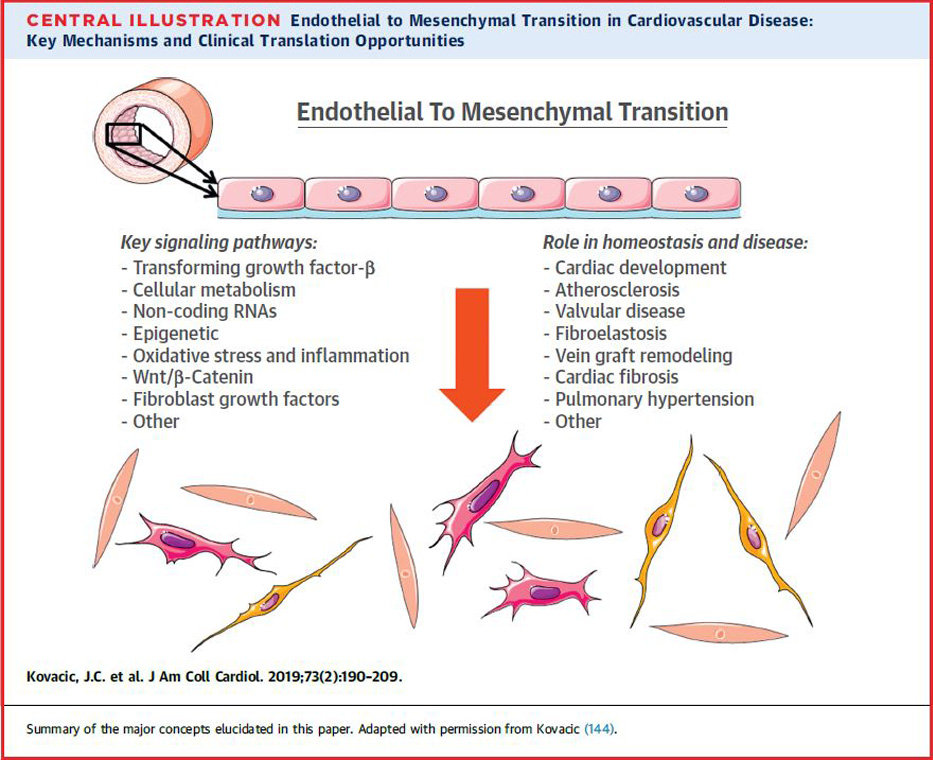Lay Summary
A common thinking is that major organs of the body are the brain, heart, lungs, kidneys, liver and intestines. However, the largest organ system is actually the blood vessels. The blood vessels not only carry blood around the body, but they have many other important functions like controlling how much energy we use, regulating the levels of hormones and even partly controlling how fast we grow older. There are several different types of cells that make up our blood vessels and which perform these essential jobs. One of the most important is the cells that line the inner tube of the vessels – called endothelial cells. Endothelial cells are in contact with the blood, and are the boundary between blood and the tissues of the body.
Recently, our group of Leducq investigators and others have shown that endothelial cells can switch into a different type of cell, called a mesenchymal cell. The scientific name for this special endothelial cell switching is Endothelial to Mesenchymal Transition, or ‘EndMT.’ The studies have also shown that EndMT is involved in both the formation of the heart before birth, and also later in life in several cardiovascular diseases (CVD). However, if EndMT is not properly controlled it could be harmful, and while EndMT is important for both development and disease there is a lot we still don’t know about it.
The purpose of our network is to markedly improve the understanding of EndMT. In particular, we will provide a clear definition of EndMT (for example, what genes change during EndMT), understand how EndMT might cause cardiovascular diseases, and we will use samples from patients with cardiovascular disease to learn about EndMT in adult humans. As stated, our ultimate goal is to develop therapies that correct EndMT as a new treatment for patients with cardiovascular diseases.
Central Hypothesis
We propose that EndMT has a causal role in human CVD, thereby defining an important and novel therapeutic target.

Technical Summary
The endothelium is one of the largest organ systems in the body. Research continues to emerge regarding endothelial dysfunction, endothelial organ-selectivity, endothelial heterogeneity, as well as many complex endothelial functions in health, disease and aging. Moreover, altered endothelial function contributes to a wide range of cardiovascular diseases (CVDs).
Recently, EndMT has been implicated as a common and potentially disease-causal pathobiologic molecular program that is involved in a multitude of different CVDs. At the cellular level, EndMT is a process whereby an endothelial cell (EC) undergoes a series of substantial molecular re-programming events resulting in a change in overt cellular phenotype toward a mesenchymal cell (e.g. smooth muscle cell, myofibroblast).
Given that is it is a major EC-specific disease-related molecular program that is functionally operative and potentially causative across a large number of CVDs, the clinical translation opportunities are significant, yet at the present time EndMT is ill-defined and significantly understudied.
The aims are of our consortium are depicted in the image below.


